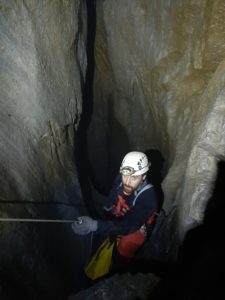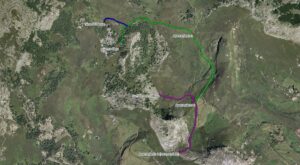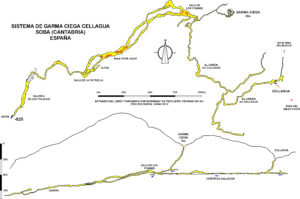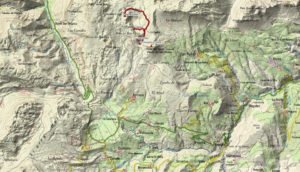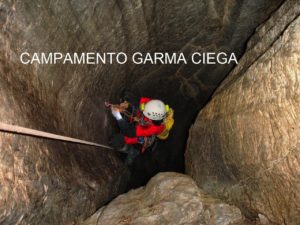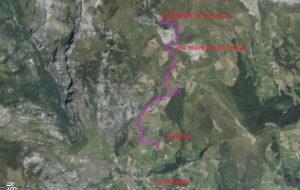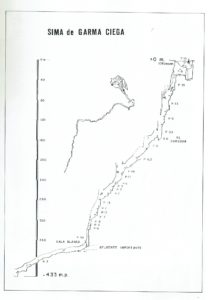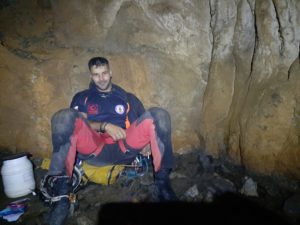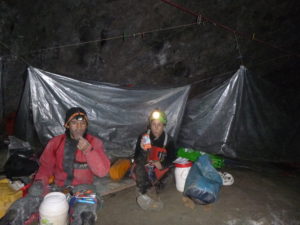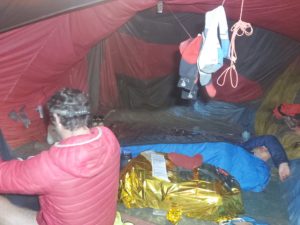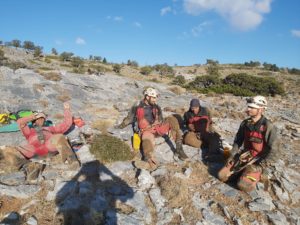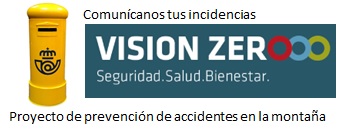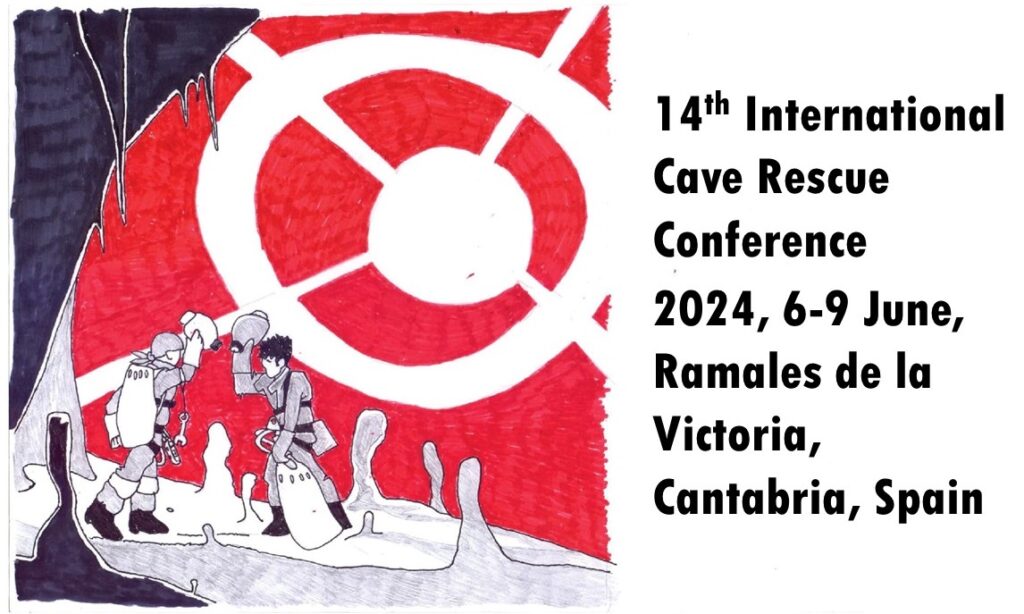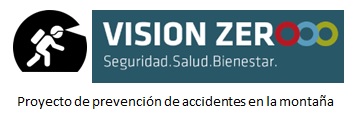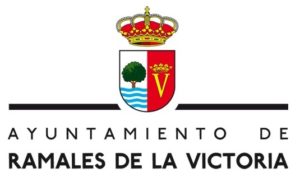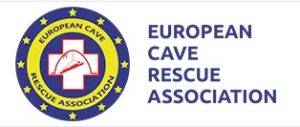International Camp:
Dates: 1-31 July 2023.
The Cave Rescue Foundation of Cantabria (ESOCAN) shall place the vertical progression ropes at the entrances to Garma Ciega and Cellagua some days before the international camp takes place. A bivouac for 10 people will also be set up in the Sala de los Titanes.
Participants are required to registrar prior to the event. They must have a sports card that can cover any rescue task, or a private insurance.
Garma Ciega and Cellagua belong to the Mortillano System, the second largest cave system in Spain (140 km. development). It is also the system with the biggest height difference in the upper course of the Asón river, reaching -930 at the siphon of Garma Ciega. Both caves join at -450, at the Sala De los Titanes.
REGISTRATION
The registration fee is 20 €. The money will be used to purchase and replace the ropes needed for the camp.
Registrations are done on an individual basis, but within a team. You’ll need to fill in the following web form.
Registrations will be considered complete only when payment has been confirmed.
Payment can be made through our payment platform: click on the photo.
Or via bank transfer to our TRIODOS Bank account:
ES04 1491 0001 2421 4922 4327
Should the access to the caves be suspended due to bad weather conditions, the registration fee will not be refunded.
The maximum number of people authorised to enter by each one of the entrances is 10, on a ‘first-come-first-served’ registration basis. Once the number has been reached, those dates will be closed.
Preference for bivouac will be given to groups coming up from the Garma Ciega siphon.
Participants will need to coordinate in order to share the bivouac, keeping in mind that maximum capacity is set at 10 people.
Prior to entering the cave, on the afternoon of the previous day, participants must show up at the Tourist Information Office in Ramales de la Victoria, in order to have the entrance and (approximate) exit dates and times recorded, as well as the objective pursued. Once out of the cave, the organisation must be notified.
This is a high level activity, so participants must be aware of the risks involved.
Cellagua:
In summer water conditions, you get wet at the P80 base and at the P58 base in the Cellagua Canyon. If the external weather is very wet, water will fall from the top of the P80 to the bottom of P58., progression can be difficult or impossible.
Cellagua Sink: X: 454.427 / Y: 4.786.363 (EPSG 25830)
Arrival point with vehicles. Going up higher may compromise the vehicle and get you trapped in case of rainfall.
Garma Ciega
Garma Ciega X: 454.022 / Y: 4.786.895 (EPSG 25830)
Track to Garma Ciega
This is the original profile of Balart’s topography. Until the Comedor, the survey doesn’t change. From there on, a side track gets you to the Sala Blanca.
If the weather forecast justifies it, access to the caves might be forbidden as long as the rainfall risk remains.
In case of rainfall, progression from the Sala Blanca to Titanes might be severely compromised.
TIPS AND ADVICE
Plan your activity in advance, carefully and systematically. Check, adjust and prepare your equipment in detail. This is an activity with a high degree of commitment.
There will be no base camp; participants are free to choose their accommodation in the villages of the upper course of the Asón river. Click on the picture to plan your trip.
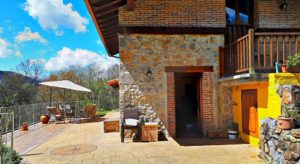 La recepción e información de entradas y salidas se centralizará en la Oficina de Turismo de Ramales de la Victoria.
La recepción e información de entradas y salidas se centralizará en la Oficina de Turismo de Ramales de la Victoria.
Reception and information on entrances and exits will be centralised at the Tourist Office in Ramales de la Victoria.
Bad weather conditions might condition the activity. These are caves with an active water course, which, in case of water fall, could block the exit. There are areas that are especially dangerous in the event of a rising in the river level (Gallery of La Ratonera, etc.).
Go in the cave only if you are physically, technically and psychologically fit.
All participants, in addition to their personal, full vertical progression equipment, must carry a thermal blanket, food, lighting and warm clothing in order to withstand the temperatures inside. It might also be interesting to carry a portable stove, sbit and alcohol gel.
The minimum group size to go in the caves is 2 people, 4 being the ideal. Groups of more than 6 people might slow down the progress.
All participants must be familiar with self-rescue techniques.
It is recommended that every participant carries a 12/13 spanner.
No one should be left alone; the group will adjust the speed to the slowest member.
Each participant must take their waste out of the cave and leave the bivouac in a perfect state.
Every participant must, within their means, help any team in trouble, even if it might compromise the objective of their activity.
Out of courtesy, priority with ropes will be given to the climbing team.
A the Titanes bivouac, priority will be given to the team coming up from the siphon.
Any damage detected in the facilities should be reported to ESOCAN, in order to get it replaced it as soon as possible. The replacement might be entrusted to a participating team, if they accept it.
Can you drink water from the underground river? This is a personal choice; it is water that has not been treated, but it might be used. All along the cave there are water inflows where fluids can be replenished.
How to manage possible jams at the first vertical section of the entrances? Firstly, plan the timetables in advance, talking to the different teams. Getting up early is a good principle of prudence.
At the Titanes bivouac, at -500, there will be awnings for 10 people using mats, but not sleeping bags, gas or food. There also be a waterproof container with a “complete” first-aid kit, which should be respected for the benefits of participants.
Don’t forget to inform of any damage in the facilities on your way out.
Once outside, you should notify the organisation about it following the established channel.
In the event of bad weather conditions, the organisation may temporarily close the access to the caves.
Authorised routes to follow are Cellagua–Garma Ciega (and vice versa) and the way down to the Garma Ciega siphon. Any other plan must be notified and authorised by the organisation. Leaving these tracks might complicate any posible rescue.
Quitting is the most intelligent decision you can make in case of fatigue, too long hours, etc. The goal of these activities is not reaching the siphon but going back home having enjoyed the whole process.

